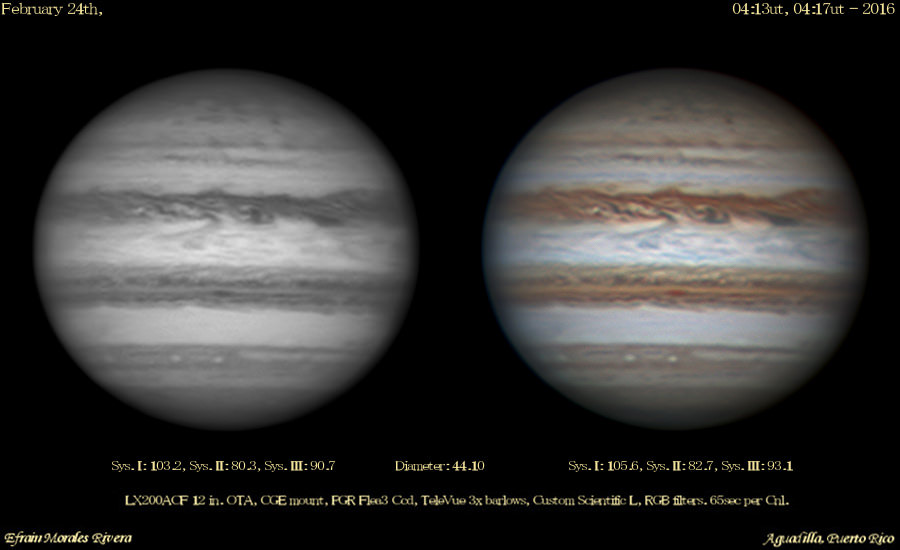Ready to explore the largest planet in our solar system? The month of March heralds the return of Jupiter to evening skies. Early March 2016 sees the planet Jupiter starting off the month less than one degree from the star Sigma Leonis. Opposition occurs on March 8th, at 11:00 Universal Time (UT). Watch out for those double shadow transits, as we’re in the midst of a season of favorable events involving the Jovian moons (See last week’s post). During opposition, the four large major moons of Jupiter cast their shadows nearly straight back onto the Jovian cloud-tops as seen from our Earthly perspective. At quadrature—the point when Jupiter stakes out a ‘quadrant’ of the sky 90 degrees east or west of the Sun as seen from the Earth –the moons and the planet Jupiter itself casts their shadows off to one side.
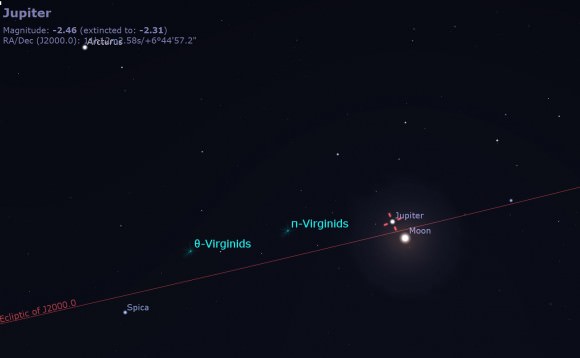
The Moon occults Jupiter three times in 2016: July 9th, August 6th and September 2nd. The very best is the final event on September 2nd, which occurs during daylight hours for Mexico and the western US, just 18 degrees east of the Sun in the evening sky. Jupiter also passes just 4′ from Venus the month prior on August 27th. Solar opposition for Jupiter in 2016 occurs on September 26th.
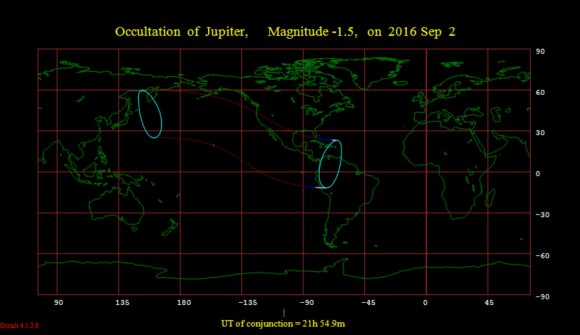
Every ancient culture noticed five ‘wandering stars’ that stubbornly refused to maintain their station, and instead moved across the sky. The four major points that describe a planet’s apparent motion are: opposition, solar conjunction, and the east and west quadrature points.
As the name suggests, opposition is simply the point at which a given outer planet rises ‘opposite’ to the setting Sun. Jupiter orbits the Sun once every 11.9 years, meaning it has moved roughly one zodiacal constellation eastward per every 399 days between oppositions. Oppositions falling during northern hemisphere winter place a planet high in the sky, a position which the Sun will occupy six months before and hence. Jupiter’s opposition in 2016 falls just 11 days prior to the March northward equinox on March 20th, placing Jupiter on the Leo-Virgo border very near the September equinoctial point in the astronomical constellation Virgo. In fact, Jupiter plunges south of the celestial equator on September 21st 2016, not to cross northward again until May 24th, 2022.
Visually, Jupiter shines at its brightest this season at magnitude -2.5. Jupiter is the fourth brightest natural object in the skies of the Earth, right behind the Sun, Moon and Venus. Place Jupiter at the Moon’s distance from the Earth, and it would span a terrifying 20 degrees across the sky. By coincidence, the innermost large Moon Io orbits Jupiter at nearly the same distance as the Moon does from the Earth. Is Jupiter a friend or foe? There’s been a recent suggestion that we’ve perhaps overstated the giant planet’s alleged role as a cosmic goal tender, warding off potentially hazardous comets. Any inbound cometary body crossing Jupiter’s orbit stands a 40% chance of having its orbit altered, a good or bad outcome from the view of the Earth.
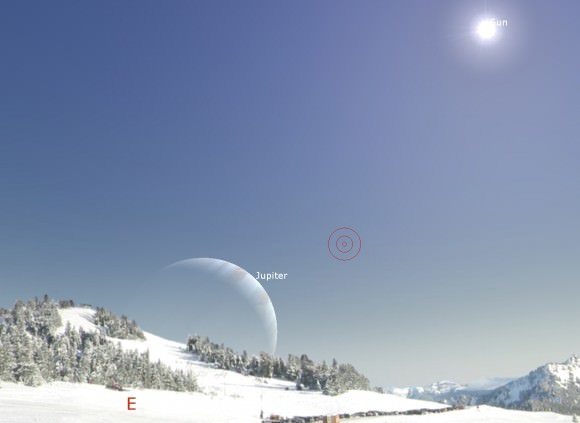
Here, from our current base camp in Rota, Spain, Jupiter sits high over the Atlantic in the early morning hours, a beacon marking a warning of the supposed ‘ends of the Earth’ to medieval sailors daring to strike out westward.
Though Jupiter is sometimes fancied as a ‘failed star,’ it also fails this definition miserably: Jupiter would need about a dozen times its current mass to rate as even a sub-stellar brown dwarf.
In the eyepiece of even a small 60mm refractor, the main two equatorial cloud bands are immediately visible, striping the ochre disk of the bloated world. One major mystery is just why the Southern Equatorial Belt pulls a vanishing act every decade or so, as it last did in 2010, while the other Northern Equatorial Belt seems permanent. And speaking of which, the famous ‘Great Red Spot‘ is now not as ‘grand’ in recent times, appearing a salmon-to-brick brown colored.
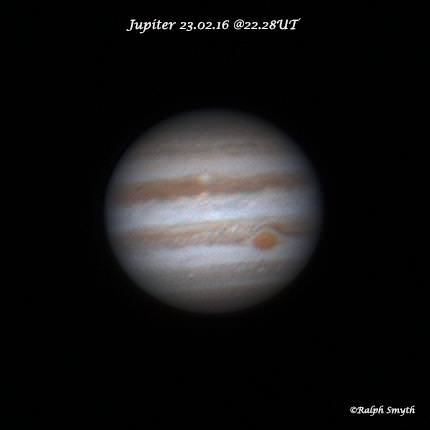
First noted by Giovanni Cassini in 1665, the intervening centuries have seen the massive storm shrink. Will this iconic planetary atmospheric feature disappear entirely in our lifetimes? We’ll surely miss the Great Red Spot if so, as it made a good ‘tick mark’ to gauge Jupiter’s rotation. Spinning around once every 9.9 hours, the Jovian ‘day’ is the shortest of any planet in the solar system. In fact, if you follow Jupiter from sunset to sunrise during opposition, you can just about witness one full rotation… in a single night!
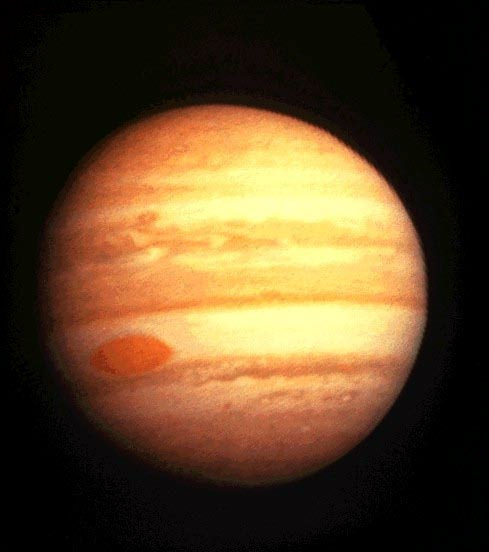
At opposition, Jupiter appears 45” in size, 1/40th the diameter of a Full Moon. The Moon also pairs with Jupiter on the evening of March 21st/22nd, sitting two degrees from the planet.
And get set to explore Jupiter this summer, as NASA’s Juno spacecraft enters orbit around the giant planet on July 4th. Launched in August, 2011, Juno will become the seventh spacecraft to visit the planet and only the second (after Galileo) to enter orbit.
2016 is an amazing year for all things Jovian!

